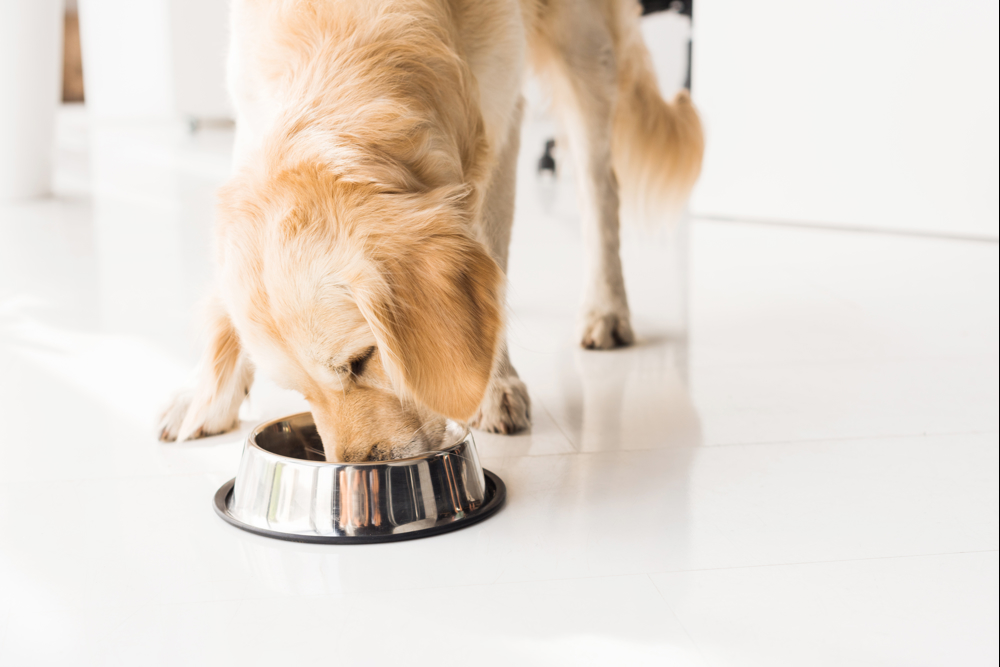
If you've ever noticed your dog burying their food or stashing it away in a secluded spot, you're not alone. The behaviour of dogs hiding food is a fascinating and instinctual trait that has roots in their evolutionary history. Understanding why dogs engage in this behaviour sheds light on their natural instincts and provides insight into their unique relationship with food.
Instincts from the wild
Dogs, descendants of wild wolves, have inherited certain survival instincts. In the wild, wolves often hide excess food to ensure a future supply. This behaviour, known as caching, is an adaptive trait that helps them secure sustenance in times of scarcity.
Protecting resources
Hiding food is linked to a dog's instinct to protect valuable resources. In a pack setting, dominant wolves might hide food to maintain control over resources and prevent others from challenging their status. While domestic dogs don't operate in packs the same way, this instinct can still manifest, especially if they feel competition for their food.
Creating a "safe" space
Dogs may hide their food as a way of creating a safe and secure space. This behaviour is often observed in rescued or adopted dogs who might have experienced food insecurity in the past. By hiding food, they establish a sense of control over their resources and feel more secure in their environment.
Sensory Experience
Dogs have a highly developed sense of smell. Hiding food engages their olfactory senses, turning a routine meal into a sensory-rich experience. Digging, burying, and then rediscovering the food can be an enjoyable and mentally stimulating activity for them.
Survival instincts in domestic settings
Even in the comfort of our homes, dogs retain their survival instincts. The act of hiding food can be triggered by an inherent need to safeguard their possessions, a behaviour deeply ingrained in their genetic makeup.
Hiding as a response to stress
Dogs may also hide their food in response to stress or anxiety. Changes in the household, the introduction of a new pet, or other environmental factors can trigger this behavior as a coping mechanism.
How to manage food-hiding
Provide a consistent feeding routine
Establishing a regular feeding schedule can help reduce anxiety and uncertainty around mealtimes, potentially minimizing the urge to hide food.
Create a safe feeding environment
Designate a quiet and secure space for your dog to eat. This can help alleviate any perceived competition or threat, reducing the need to hide food.
Use puzzle feeders
Engage your dog's cognitive abilities and make mealtimes more enjoyable by using puzzle feeders. These devices dispense food gradually, providing mental stimulation and reducing the instinct to hide excess food.
Seek professional guidance
If food-hiding persists and is accompanied by signs of stress or anxiety, consult with a professional dog behaviourist or veterinarian. They can offer tailored advice based on your dog's specific needs.
While the act of hiding food or food treats such as bones or biscuits may seem curious, it's an instinctual behaviour deeply rooted in a dog's evolutionary history. Understanding and addressing this behaviour with empathy and appropriate measures can contribute to a harmonious relationship between you and your canine companion. Note that food hiding can also be attributed to hormonal changes in your dog. In these cases, always consult a veterinarian.
Find a vet near you
If you're looking for a vet practice near you, why not visit the Royal College of Veterinary Surgeons' Find a vet page.
Find a dog trainer or behaviourist
Our online register helps you find accredited dog training instructors and canine behaviourists who have proven specialist knowledge, skills and experience.
Think your dog may be affected?
If you're worried about your dog's health, always contact your vet immediately!
We are not a veterinary organisation and so we can't give veterinary advice, but if you're worried about any of the issues raised in this article, please contact your local vet practice for further information
